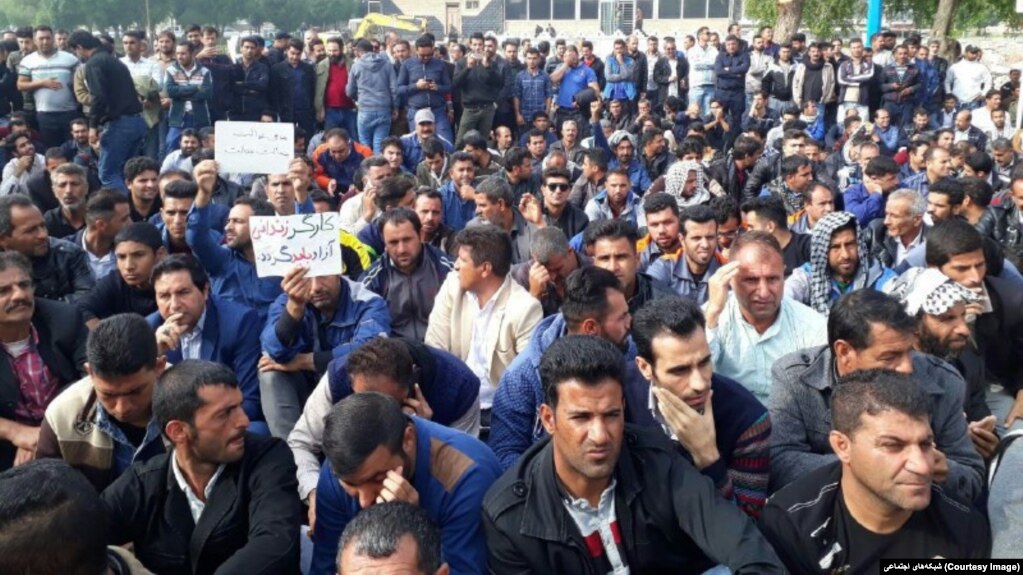In the first issue of this magazine we had pointed out that one of the main contradictions of the past decade has been that of a general inability of the workers’ movement to create the political forms of its own social emancipation, despite a great propensity of the masses for action. The reasons given have been many and varied. All of them, however, have a liquidating character and point to considering the power of the labor movement in the workplace a twentieth-century remnant. In this interview we focus, among other things, on two recent experiences of workers’ councils in Iran. The remarkable fact is that these emerged, unlike what we usually think, at a non-revolutionary stage, thus testifying to how workers’ control of factories, warehouses and offices remains a practice of compelling relevance, as well as a necessity for overcoming the current system.
Over the last years, there has been the emergence of a few examples of workers’ councils in Iran. Can you tell us something about these experiences?
Iran has seen a surge in labor militancy in recent years. At least since 2010, class struggle in Iran has become exponentially more militant and organized. We have witnessed prolonged and militant labor strikes across different sectors and industries in Iran. Workers have utilized independent and parallel labor organizations to the state sponsored unions amidst the legal barrier and the political repression against collective bargaining. The most progressive factions of the labor movement, the industrial workers at Haft-Tappeh Sugar Cane Co and Iran (Ahwaz) National Steel Industrial Group (INSIG), brought back the idea of Showras and the council management of the workplace to the center of the conversation.
In both cases, the idea of Showras (workers’ councils) emerged out of the grassroots workers mobilizations which was prompted mainly in response to the privatization of their firms, mass-layoffs, and prolonged overdue wages. In Haft-Tappeh, there has been a long history of workers activism; going back to the 1970s when workers opened their syndicates for the first time. Shut after the Revolution, the syndicate reopened in 2007 despite legal challenges. The labor council in Haft-Tappeh emerged out of this syndicate, with radical precarious workers comprising 22 representatives from 14 different sections of the factory. The idea of labor council management was first publicized by Esmail Bakhshi, the progressive labor leader, in 2018, during the height of labor strikes in Haft-tappeh. In one of his now most famous speeches at the general assembly during one of the episodes of a 3-month long strike, Bakhshi expressed the need for workers’ control of the factory in what became his and other workers’ moto: “We can do it ourselves.”
The orders have always been from the top, today we have decided to dictate rules from below. We assign tasks to the government … we act collectively and as a council … individualists, nationalists, racists and reactionaries have no place amongst us. Our alternative are [sic] workers’ councils. This means that we make collective decisions for our own destiny. We issue verdicts from below. We have experienced enough suppression…
Soon after, the government used a variety of tactics to suppress the council movement at Haft-tappeh. In 2018, Bakhshi and several labor activists were arrested and tortured, while other progressive militant workers were fired by the employers. Bakhshi was sentenced to 14 years in prison and the government announced the general assembly to be illegal and replaced it with the state-controlled Islamic Council of Work.
Despite this setback, in 2020, Haft-Tappeh workers won a major victory, forcing the state to nullify the privatization. It took another year until 2021, for the government to finalize the public ownership of the firm. Even then, workers faced numerous issues, including overdue wages, the securitization of the factory, and direct repression. Nevertheless, workers had won a significant victory in terms of achieving their demands through protracted struggle.
The emerging condition of the workers’ council at INSIG was similar to that of Haft-Tappeh. However, unlike Haft-Tappeh, the INSIG workers had no prior organizing experience or a syndicate to organize their efforts. The mayhem of privatization and the consequential production halt kept workers and their overdue demands in limbo. Finding local officials unable and unwilling to respond, the disgruntled workers mobilized using informal friendship (kinship) circles which gradually developed into secret committees and assemblies. Unlike in Haft-Tappeh, where labor representatives were out and publicly active, the INSIG council did not have publicly known individual representatives. Because of the secret nature of these assemblies, there is not enough information on their organizing mechanism, but the assembly consisted of a number of representatives from different sections of the factory. The underground characteristics of the INSIG council proved to be highly efficient during the height of state repression by defusing the pressure from certain activists.
From 2016 to 2018, the INSIG council organized several successful protests and general strikes. From the 17-day long general strike in 2016, where workers occupied the factory and denied entrance to the personnel, to the 40- day long general strike in 2018, which became one of the longest labor protests in the history of labor activism in Iran up to that date. During these strikes, the progressive workers’ representative Meytham Al-Mahdi, gave a speech in support of the arrested Haft-Tappeh workers at the general assembly of INSIG (shortly after Bakhshi’s speech in Haft-Tappeh). In his speech Meytham talked about the unity of the working class and announced that council management is the only viable solution for INSIG’s crisis. Following this speech Meytham and 40 other workers were arrested in a series of night raids. After his release, Meytham was forced into hiding before fleeing the country for his safety.
During the two years of protracted struggle, the INSIG council deployed a number of innovative tactics, including the disruption of the Friday prayer –which later became a popular tactic among protesting workers in other sectors and cities– occupation of the administration building, and expelling the managers and supervisors, and the occupation of the treasury of the National Bank of Khuzestan province. Moreover, during the prolonged occupation of the factory in the spring of 2018, in response to the factory shutdown, the INSIG council organized patrol groups to protect and supervise the factory’s properties overnight against the private owner who was accused of selling the machinery. This was a novel and unprecedented act of workers’ control and supervision in the form of protecting the machinery. Despite an eventual crackdown on the INSIG council and workers representatives, workers successfully forced the payment of arrears, the establishment of social security insurance, and the re-nationalization of the factory.
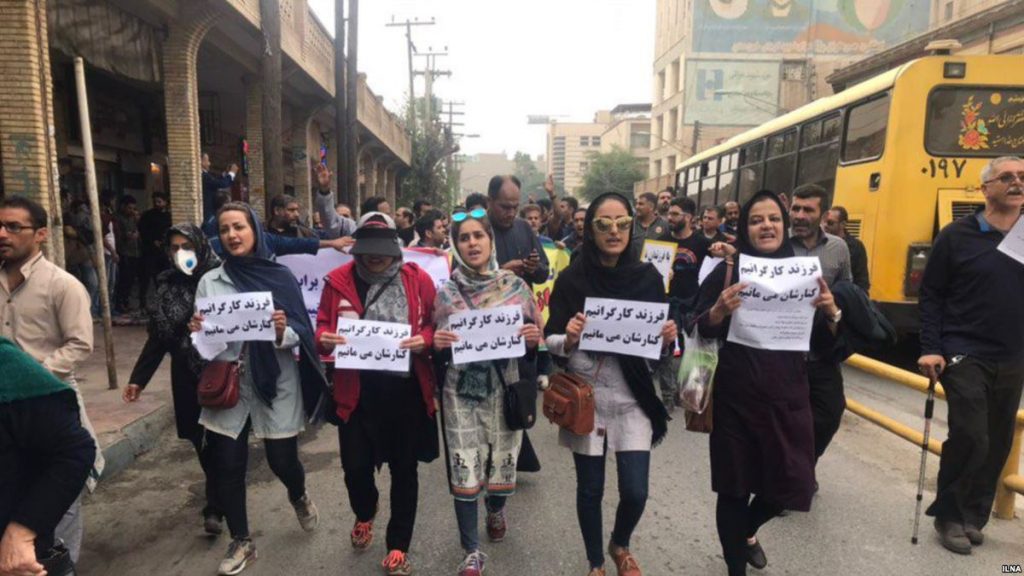
In contrast to what we tend to assume, the two experiences of workers’ councils that you referred to have not developed in a revolutionary situation. What were the main factors that encouraged or forced workers to take control of the factories?
That is correct. These experiences are developed in the context of perpetual economic and production crises, mounting inequalities, and poverty. All of these resulted from the shift in the government from a developmentalist state to neoliberalism with over-reliance on extractive economy and removal of import substitution at the expense of the manufacturing industries. Most of the manufacturing industries which were privatized over the past two decades experienced bankruptcy and have shut down permanently. The private owners of these companies, most of whom affiliate with the government and army, took loans and either placed the money in an offshore account or spent it immediately in non-productive sectors of the economy such as finance and real estate.
Similarly, most factories on the verge of collapse are operated by similar owners or umbrella corporations with similar people as shareholders. These private owners benefited massively from buying factories for a fraction of their actual cost to shutter their new businesses. These factories, some of which were the largest industrial manufacturers in the ME region before internal policies and external sanctions, have been among the most active sites of labor struggle in recent years. With the aforementioned INSIG or the Haft-Tappeh Sugar Cane Co forced to either shut-down or are barely functioning/ producing with much less than their full capacity after privatization. These private owners have attempted to maximize this state-supported financial speculation by engaging in other non-productive activities unrelated to the company’s main function. For example, the owner/employer of Haft-Tappeh rented and repurposed massive hectares of land previously used to plant sugar cane. This has been exacerbated by the government’s pursuit of “globalization,” which has led to the removal of import subsidies in industries that are uncompetitive in the global market. The unregulated importation of sugar from Cuba has been part of the production crisis in Haft-Tappeh and the Iranian sugar industry in general.
This production halt is similar to the revolutionary situation of 1979 when most capitalists fled the country and workers had to adapt to the vacuum created by it in their workplace. Before Khomeini and the Islamic Republic Party hijacked the revolution and violently consolidated power, workers’ councils were increasingly the popular form of economic and political organizing prior to and immediately after the Revolution. Like then, today’s workers are concerned with the flow of production as their livelihood depends on it. As a result, much of the labor protests in recent years center around opposing privatization and private ownership. In the two cases discussed earlier, workers have demanded to take back their factories from the private owner and argued they could manage the factories better. In these conditions, the idea of council management has been a strategic and ideologically successful response to the vacuum caused by the neoliberal order and broader issues workers face in the neoliberal economy. From this perspective the contemporary councils, unlike their predecessor, are more an immediate response to an economic crisis rather than a political crisis.
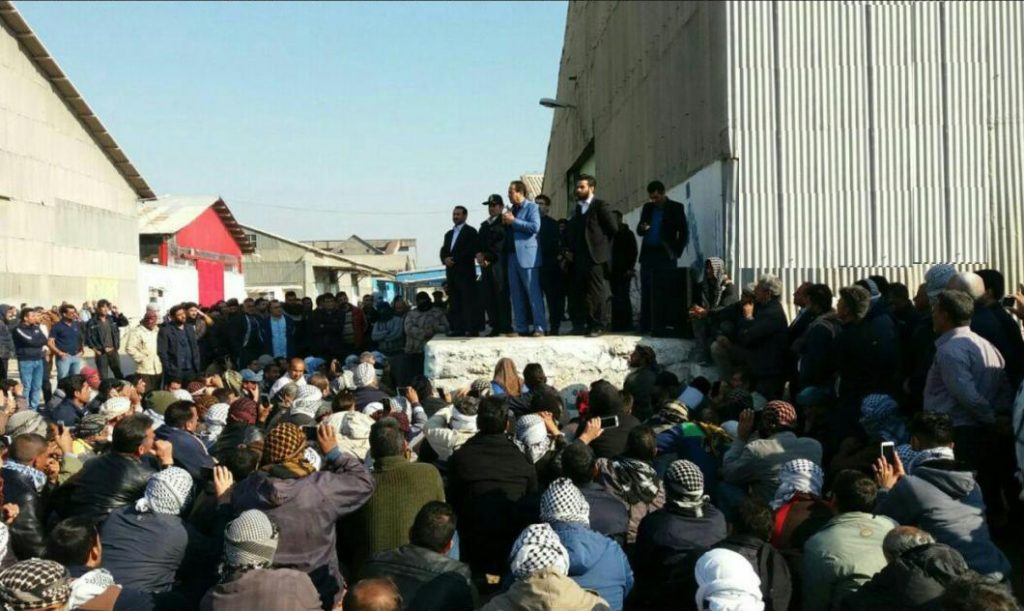
Against a reductionist interpretation of workers’ councils as merely restricted to workplaces and workers, we believe that it is important to situate the emergence of these radical and democratic bodies within a broader context that ranges from the activity of political groups to regional and local specificities, up to gender aspects. Were there factors beyond the factory that helped the emergence of workers’ councils?
In terms of social context, first of all, one of the most important strategies deployed by the labor councils in Haft-Tappeh and INSIG was to take the labor struggle beyond the workplace and expand it into the streets and urban areas to get popular support. This happened both offline and online (virtually). In both cases, the factories are located outside the city skirts, yet to their genius, workers realized that to gain the official attention, they need to be seen and heard. The only way to achieve that goal was to publicize their struggle by taking it outside the walls of their factory. In my opinion, this was the winning card in both cases, and in a domino effect was adopted by other sectors. Haft-tappeh council took the protests to the city of Shush, where they received local support. The local support is not surprising, given that Haft-Tappeh is the largest employer in the area. Hence, the majority of the city of Shush is directly or indirectly linked to Haft-Tappeh. In a sense, the economy of Shush city is deeply entangled with Haft-tappeh and sugar cane. This is why the labor strikes received overwhelming local support. Workers also used social media to broadcast their struggle to the nation, and given their long legacy of activism, they received popular support from other civil and labor groups such as pensioners, students, teachers, and other labor organizations, such as the INSIG council and the Syndicate of Tehran Bus Drivers.
Similarly, at some point in their crisis, INSIG workers realized their success depended on their militancy. They took their protests outside the factory by blocking the main transit roads and organizing sit-ins in front of government buildings. As mentioned, workers also occupied the National Bank and the treasury, which at the time controlled the INSIG. Overall, these militant strategies proved successful, as they gained much-needed popular support from the civil society. This helped to build a strong societal power for the councils.
To understand the significance of councils, I should give some context about Khuzestan province (home to both Haft-Tappeh and INSIG). Over the past four decades– since the ’79 Revolution– Khuzestan province has been in a constant state of crisis. Following the eight-year war with Iraq, where Khuzestan province suffered as a major front in the war, a surge in migration, displacement, ecological degradation, and poverty occurred. Likewise, in other regions of the Southwest, the majority of the population (especially Arab ethnic) are subjected to severe ethnic and religious discrimination. Nationally dominant, ethnic Fars subject Sunni groups, ethnic Arabs, Kurds, Baluch, and Afghan refugees to dreadful economic and political oppression. According to official reports, the unemployment rate in Khuzestan is close to 40 to 45 percent, almost double the national average of 25%. (It is worth noting that the official unemployment rate is incredibly underreported, as the Census defines employment as working two hours or more a week.) We also see that the rate is higher in cities where most of the population is ethnically Arab. The use of immigrant workers and favoring non-Arab labor in the province’s large projects, such as oil and gas, is one of the reasons for the exceptionally high unemployment rate.
In terms of economic inequality, the findings of a recent study measuring poverty in Khuzestan (using Multidimensional Poverty Index measuring health, education, housing, employment and living standards) suggests that in 2016 the average poverty rate of this region was 35%, more than the national average, with most deprivation seen in employment, health, housing, education and living standards. This high rate of unemployment and poverty is notable given the abundance of hydrocarbon and water resources in Khuzestan, which contributes to more than 40% of Iran’s public budget. Despite the abundance of water resources (there are five rivers in this region), Khuzestan province has been facing severe water shortages and an increasingly desolate natural environment because of the detrimental economic and climate policies of the Islamic Republic, as policymakers merely reflect the interests of the Iranian bourgeoisie.
Against this backdrop, Khuzestan has been at the center of council movement and mass uprisings over the past four years. From 2018 to the present, there have been several mass uprisings in protest to the ongoing crisis and government policies, including the water transfer policies, dam construction, cutting off agricultural water and wetlands, and opposition to the forced migration of the Arab people as a result of environmental degradation. These mass uprisings initially emerged out of the 2017-2018 labor struggles in Haft-Tappeh and INSIG and went beyond regional protests and expanded to the rest of the country. In June 2021, uprisings started in the Arab majority cities of Khuzestan in response to the water crisis and expanded nationally within a couple of days. Most recently, protests erupted in May 2022 over the ever-rising prices of foodstuff. In response to these uprisings, the government relied on its default repressive tactics by cutting off the internet and electricity in Khuzestan and other protesting cities to censor the crackdown and control the situation. The government might successfully suppress the uprising temporarily, but the material roots of the protests continue to escalate and can only be suppressed for so long.
Councils emerged from this context of heightened inequality, poverty, unemployment, and environmental degradation. Despite the substantive decline in the structural power of workers, they organized through councils and ignited mass urban uprising of the unemployed and farmers.
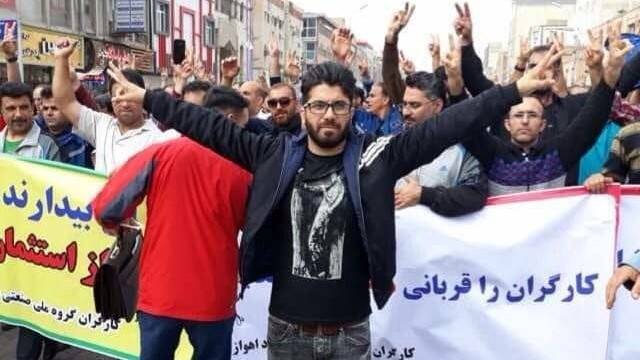
The capacity of workers to take control of the workplaces is not something new in Iran. In the aftermaths of Shah’s fall in 1979, hundreds of workers’ councils mushroomed almost everywhere. Can you tell us more about this experience and how the Islamist counter-revolution was successful in defeating the movement?
Absolutely. The contemporary council movement is very much a relic of the 1979 Revolution. Showras played an important role in the 1979 Revolution and the labor movement in general. During the Revolution, workers ‘and peasants’ councils, and in some cases local/neighborhood councils, were in political and economic control of areas and industries across Iran.
This was particularly pronounced in the oil industry. Although the oil workers did not participate in the early stages of the revolutionary mobilization, their mass strikes had an important role in grounding the Shah and empowering other workers to join the revolutionary movement. After the fall of the monarchy, secret committees, with the help of revolutionary communists, transformed the factories expropriated from the fleeing bourgeoisie into factory council controlled sites of production.
This expropriation was widespread. During the revolutionary period of 1978- 1980, most of Iran’s large industrial factories were run by the workers’ councils. Major national industries included Iran Khodro (auto manufacturing), Melli Shoe, Drug Production, Darupakhsh (Pharma), Abadan Refinery, Isfahan Steel, and all factories affiliated with the Industrial Development Organization of Iran.
However, for the newly consolidated revolutionary government (both the provisional and the Islamic Republic Party), workers’ control meant losing control of large factories. For this reason, during the violent consolidation of the state under the Islamic Republic Party in 1980, the government deemed councils dangerous, founded the Islamic Councils in an attempt to co-opt the councils, and purged communists from every aspect of the economic and political system. The Workers House, an administrative hub formed by the worker’s councils during the revolution, was occupied by the government, all Marxist and leftist workers were expelled from the factories, and the Workers’ House was given to the Islamic Council. During this period, more than 500 workers and thousands of Marxist activists were executed. Many labor activists who survived only did so because they fled the country before capture. Within a few years, the government had eradicated all independent councils.
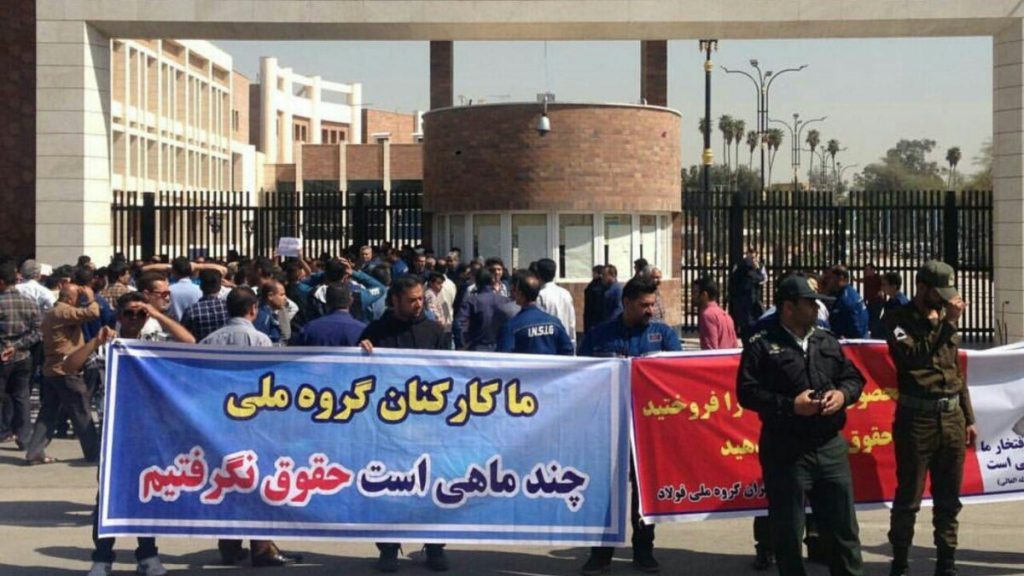
Coming back to today’s Iran, what is the current economic and social situation in the country?
Not good. A combination of internal and external factors has created one of the biggest economic crises in modern Iran.
In terms of internal crisis, the recent report from the Statistical Center of Iran suggests that the inflation rate in March 2022 reached 41%. The details of the Statistical Center report show that the price of foodstuffs has grown by nearly 52% since last year. Only eight other nations have higher inflation, many also under US sanction. The price increase has been higher in rural areas than in urban areas. Similarly, over the past few years, the currency (Iranian Rial) has lost more than 80% of its value, with the US dollar exchange rate has exceeded 300 thousand Rial for 1 USD. In 2021 the minimum nominal wage in Iran (based on the unofficial currency exchange rate) was 55 cents per hour, half of what Mexican labor (among the cheapest in the world) is paid ($1.05/hour). High inflation rates, when not matched with nominal wages, decrease the real income. Since 1980, real wages in Iran have declined (-0.16%) while household expenditure has, on average, tripled. Money continues to be made by capitalists who exploit the massive inflation and the devaluation of currency and wages. The volume of exported oil and its price almost doubled since last year, while the country’s non-oil exports grew by more than 40 percent over the same period. While some of this has been caused by sanctions and the government has attempted to reduce inflation, Iran suffered from chronic high inflation prior to sanctions. Many of these actions have been counterintuitive or have used IMF and World Bank economic logic.
In addition to these monetary policies, external factors such as the sanctions have exacerbated the crisis. The global economic sanctions placed on Iran exponentially since the 1980s have heavily damaged the economy, which increasingly depended on exports/imports. The economic sanctions have further damaged the manufacturing sectors as they consume more than 80% of imported products, making it difficult for Iran to produce its own goods. The interruption in the global supply chain made the procurement of imports uncertain, damaging both domestic and international production. Hit by supply chain challenges and higher operational costs, non-oil industries were forced into complete or partial shutdowns and mass layoffs of workers. The resulting slow-down of economic activity in the non-oil sectors, including auto, machinery, and construction, has contributed to the unemployment crisis. The consequent sharp decline in real growth domestic products per capita, declining manufacturing employment, and the double-digit inflation rate have strongly impacted the labor market and poverty rate while exacerbating government dedication to privatization.
Amidst these concurrent crises, the government has continued with its neoliberal expansion. Disregarding the living conditions of the people, the government has carried out a concerted process of subsidy elimination in recent years. Encouraged by the IMF’s proposed plan to end a universal cash transfer program introduced in 2011 meant to compensate workers for eliminating cheap (subsidized) fuel, the government eliminated the program in 2019. Most recently, the wheat subsidies were removed, leading to a thirteenfold increase in bread prices and other wheat-based products. This crazy and sudden increase in food prices was followed by the elimination of all pharmaceutical subsidies. Facing external threats, the Iranian bourgeoisie has attempted to regain the profits no longer accessible to them by consistently subjecting the working class to harsh austerity measures and political repression.
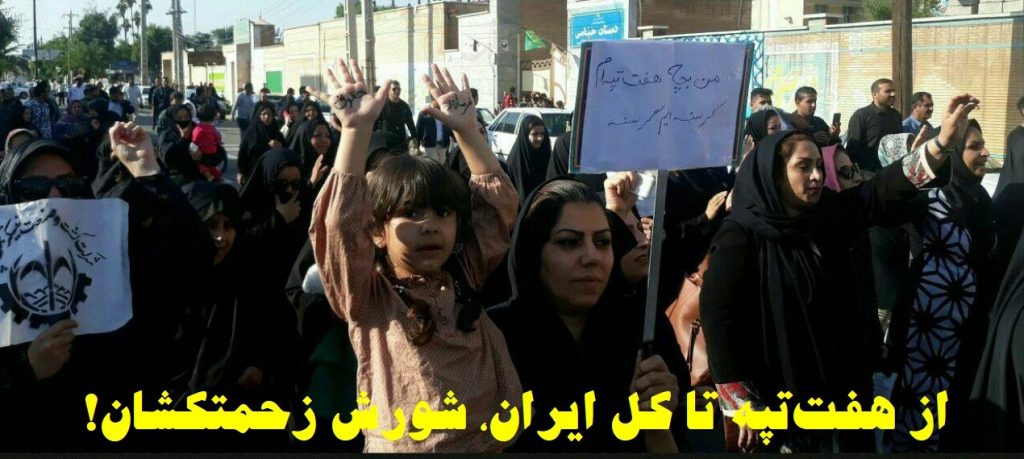
To react against this situation, have workers protested? In which sectors? And through which form of mobilization?
The government’s neoliberal reform sparked resistance and popular uprisings as early as the ‘90s, with the government’s first attempt to implement structural adjustment policies. The waves of urban insurrections, which started in 1991, forced the then administration to suspend those policies until 2010 when the government suddenly increased the gasoline price four-folded. Even though the rise of gas did not spark any popular resistance, it was a stepping stone for the labor protests in the coming decade. Since 2010, with the government’s intensification of neoliberal policies, the casualization of work, and the rise of inequality, major protests organized by the working class have erupted in urban areas. Workers in all sectors of the economy have reacted to the worsening structural condition: oil workers, heavy machinery and steel workers, workers in the service industries like bus drivers, railroad workers, municipality workers, and teachers, and finally, in the gig economy, Snapp! workers (equivalence of Uber) have all gone on multiple strikes in the last few years. Interestingly, pensioners are an active part of all protests and provide a large amount of education to new organizers. It is safe to say that never in the history of modern Iran working class has been this organized and active.
This is not limited to workers making workplace-based demands. Since at least 2017, urban uprisings have been on the rise. As mentioned earlier, the first of such uprisings emerged out of the South West region, particularly Khuzestan province, for the myriad of economic, social, and environmental crises. Since then, Iran has seen an increasing number of uprisings. In 2019, the sudden rise in fuel prices sparked one of the largest and bloodiest uprisings, with as many as 1500 protestors killed and thousands arrested. As in 2019 and 2021, the most recent waves of protests began this last month (May 2022), started in Khuzestan, and spread across the country. The Khuzestan protests erupted following the nationwide teachers’ strike. Quickly, these protests began targeting the high price of foodstuffs, especially bread. The main demands were the restoration of subsidies, improved environmental conditions, and improved working conditions. Like previous uprisings, once solidarity protests began in other cities and provinces, the state mobilized the entirety of its repressive forces to prevent communication between cities and to execute protesters in the street.
Something important about these urban uprisings is that they have the support of the labor movement. Teachers, pensioners, and other progressive labor organizations have expressed their support for the urban insurrections. It is worth mentioning that teachers are one of the most successful factions of the labor movement in Iran and are currently the largest organized labor movement in Iran. Despite the heavy repression, the teachers’ movement has achieved an unprecedented level of sustainable national organization and has successfully imposed its independent organizations on the government. From this perspective, the teachers movement shows that severe repression nor the yellow and parallel government sponsored organizations automatically co-opt or stop a labor movement.
In addition to the teachers support, prominent labor unions, including Haft Tappeh, the Tehran Bus Drivers Syndicate, and the pensioners, have published a joint statement supporting the urban protests. Though unorganized previously, the Iranian working class is quickly showing solidarity that goes beyond industries, ethnic divisions, religious divisions, and to a lesser extent, gender divisions. This rapid move to unified, organized, and coordinated protests have placed the proletariat in a stronger position to wage class war.
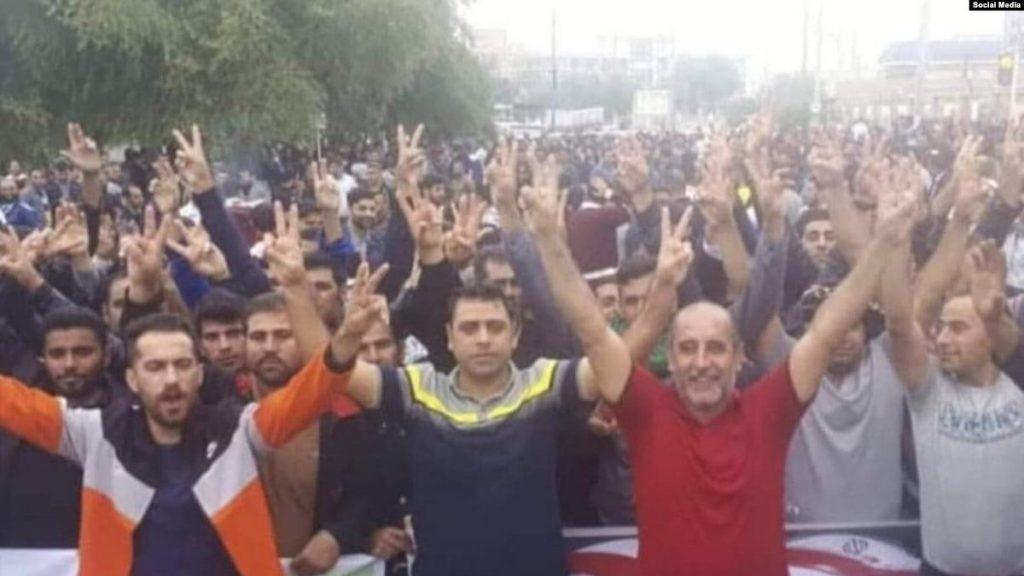
To conclude, what is the current situation of the left in Iran? Does the Stalinist left remain dominant? Are there groups that adopt an internationalist perspective?
I’m not sure what you mean by the Stalinist left. But the left in Iran and internationally has been hurt partially because of the sectarian divide. The result of this divide has served only the global capitalist class, which has gained more traction and power over the past decades.
As much as the Iranian left is concerned, since 2018, many underground Marxist organizations have emerged whose creativity in organizing and education has led to important advancement of the labor movement. This is in line with a general tendency among organizers to reach across bourgeois-back divisions. As I described above, this has strengthened and become more pronounced in the labor movement and is now moving into student circles. The government’s sensitivity to this turn to the left has been accompanied by both soft and hard suppression. The soft suppression consists of the rise of a pseudo-left in the form of the Islamic Justice Movement and discourse put forth by Student and Labor Islamic Councils, which attempt to reduce the economic crisis to individual managerial ineptitude and frame it as the fault of some bad apples. Similarly, this discourse co-opted the anti-imperialist arguments to deflect any criticisms of the government. Despite the government’s elaborate attempts to eliminate the left through its hegemonic powers, unified Marxist circles are multiplying throughout the country.
Many underground radical Marxists continue to publish theoretical and political papers, engaging in agitation and organizing, popularizing radical politics in the labor movement in the past years. Journals such as Naghd (“Critique” in English) and Political Economy Critique engage in original theoretical and analytic works, as well as comparative case analysis and translations for Iranian labor to learn from the successes and mistakes of international labor and the Marxist movements. At the same time, Marxist circles and work groups such as the Workers’ Organized Action Committee (Komite Sazmandehi e Amal e Kargari) and The Slingers Collective (the English section of the Majanigh Collective) connect with workers on the ground in various industries, engaging directly with organizing and education. These two working groups publish reports and analyses in Farsi and English describing the experiences and conditions they witness. Given the state’s repressive tactics, members of all groups risk abduction, torture, or even death at the hands of the fascist Islamic Republic to improve the proletariat’s conditions.
Put simply, Iranian workers, students, academics, and leftists have largely been building a popular front-style movement. Faced with the immediacy of the economic and social crisis, in addition to the government suppression, this popular front has largely aimed to avoid needless infighting and the sectarian divide. Of course, there are theoretical and political debates about council management versus syndicate and unionism. Still, for the most part, it seems that the class consciousness has increased to the point that the working class realizes that they need to unify to successfully resist against the increasingly aggressive class war waged by the bourgeoisie. I think and hope the international left realizes this too and join the Iranian movement to fight capitalism once and for all.
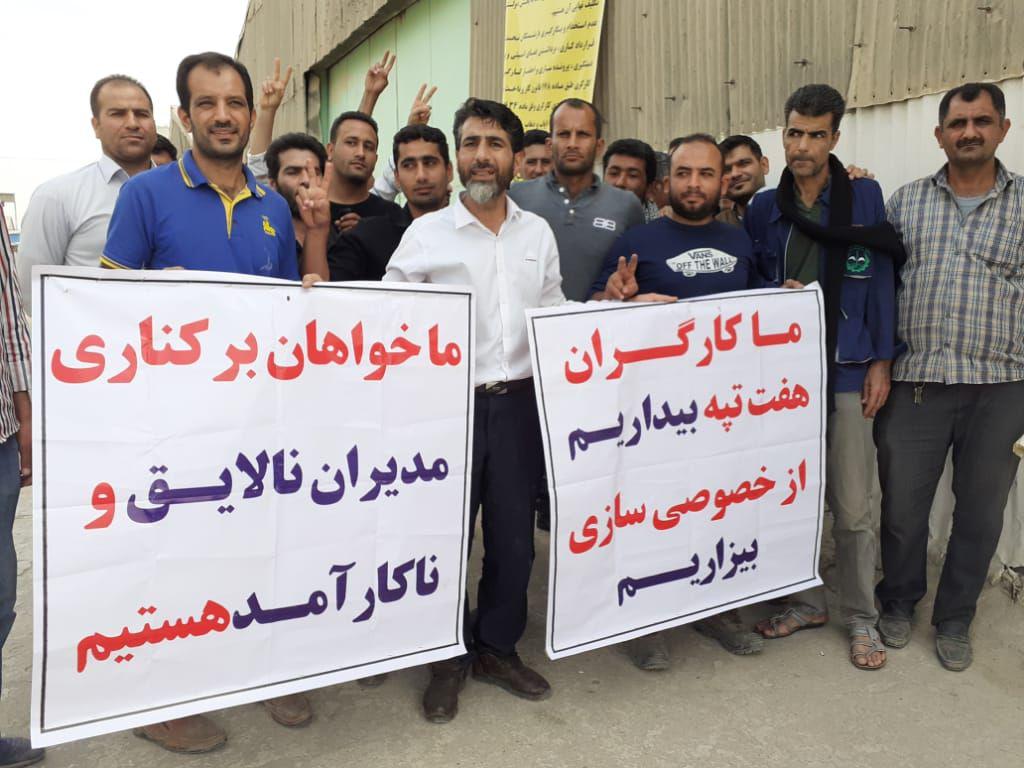
References:
Bayat, Asef. 1987. Workers and Revolution in Iran: A Third World Experience of Workers’ Control. London: Zed.
Bayat. Asef. 1994. “Squatters and the State: Back Street Politics in the Islamic Republic.” Middle East Research and Information Project (MERIP) 191:10-14.
Kheirollahi, Alireza.2018. Kārgarān bi Tabaqeh: Tavān-e Chānezani Kārgarān dar Irān pas az
Enqelāb (Workers Without Class: Bargaining Power in Iran after the Revolution). Tehran: Agah.
Nomani. F and Behdad. S. 2012. “Labor Rights and the Democracy Movement in Iran: Building a Social Democracy,” Northwestern Journal of International Human Rights. Vol 10, Issue 4: 212 (2012).
First published in Italian on August 10 in Rivista Egemonia


